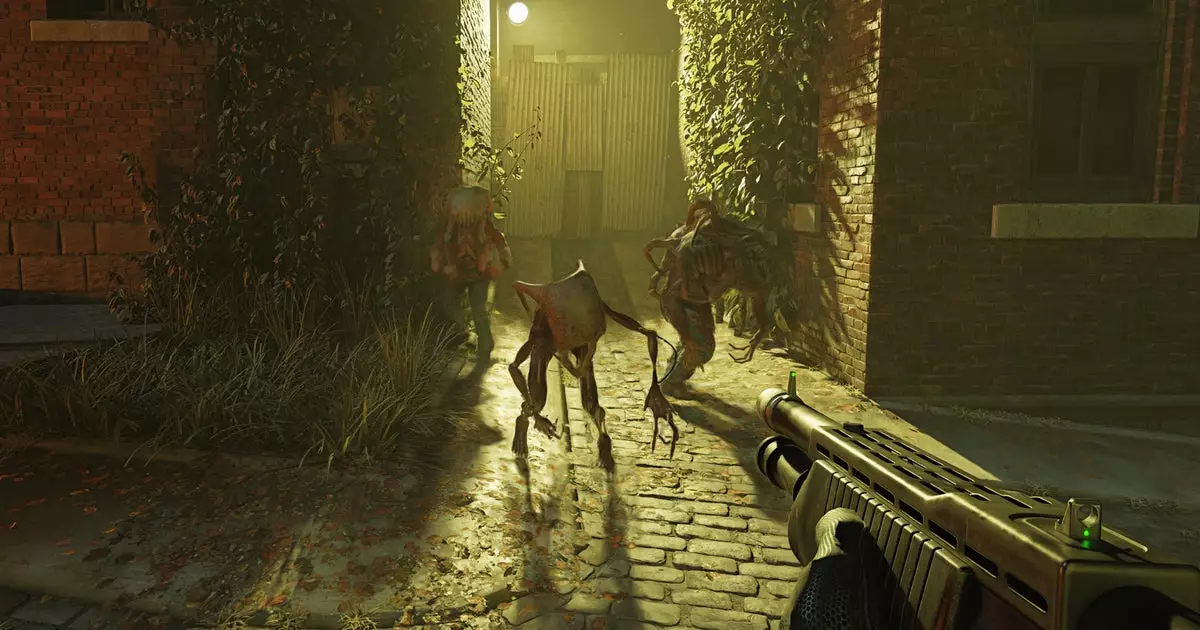In the gaming universe, nostalgia holds a profound power. Few titles epitomize this sentiment like Valve’s iconic Half-Life 2, a cornerstone of the first-person shooter genre. The announcement by Nvidia regarding the Half-Life 2 RTX mod, a project initially revealed in 2023, rekindled excitement among many gamers. After all this time, fans are eager to see beloved experiences revived with cutting-edge technology. However, as anticipation builds for the upcoming demo set to release on March 18, it’s essential to scrutinize the implications of such advancements.
The RTX Mod: A Beneficial Upgrade or a Desperate Flashback?
Nvidia claims that every aspect of Half-Life 2 has undergone significant enhancement through the RTX mod. With promises of upgraded visuals encompassing weapons, enemies, and atmospheric details, one might envision a seamless blend of nostalgia and modern fidelity. Yet, the reality is more nuanced. Despite the impressive marketing speak, the live demonstration of the RTX capabilities raises questions about the necessity of such improvements. For many players, the original game’s aesthetic holds a charm that may be lost amidst the fogginess and potential over-processing of visual elements.
As someone who has cherished every pixel of Half-Life 2 for decades, I find myself skeptical about whether the extensive graphical overhaul genuinely adds value to the classic experience. The sentiment may echo in many gamers’ hearts: while enhanced graphics can draw in a new generation, does it truly honor the essence of what made Half-Life 2 so revolutionary?
The Technological Divide
Another troubling aspect of the RTX mod is the requirement for advanced hardware. Nvidia’s recommendation of the RTX 50 Series graphics card signifies that only a select group of gamers will fully access the high-level details depicted in promotional content. The irony isn’t lost on me—here we have a game rooted deeply in community and innovation, now potentially alienating a significant segment of its audience due to technological constraints.
This raises a critical question: in the pursuit of innovation, are we leaving behind the very fans who helped build the franchise’s legacy? Playing a nostalgic title like Half-Life 2 shouldn’t come with the burden of upgrading your entire gaming setup. While Nvidia offers some assurances regarding compatibility with older GPUs, these experiences often lead to performance compromises that can diminish the enjoyment intended by the original game.
Lessons from the Past
Interestingly, Valve’s thoughtful update during Half-Life 2’s 20th anniversary reminds us that there’s still room for appreciation for the original game without a heavy emphasis on enhanced visuals. This recent update not only merged the episodic content but also resolved long-standing bugs, fostering a sense of preservation rather than radical alteration. Perhaps the true magic lies not in reimagining classics but in breathing new life into their inherent charm.
The tension between innovation and nostalgia in gaming isn’t new, nor is it likely to fade anytime soon. As we await the demo of Half-Life 2 RTX, gamers must navigate the blurred lines of technological advancement and the preservation of beloved experiences. Only time will tell if the allure of revamped graphics outweighs the love for the original.

